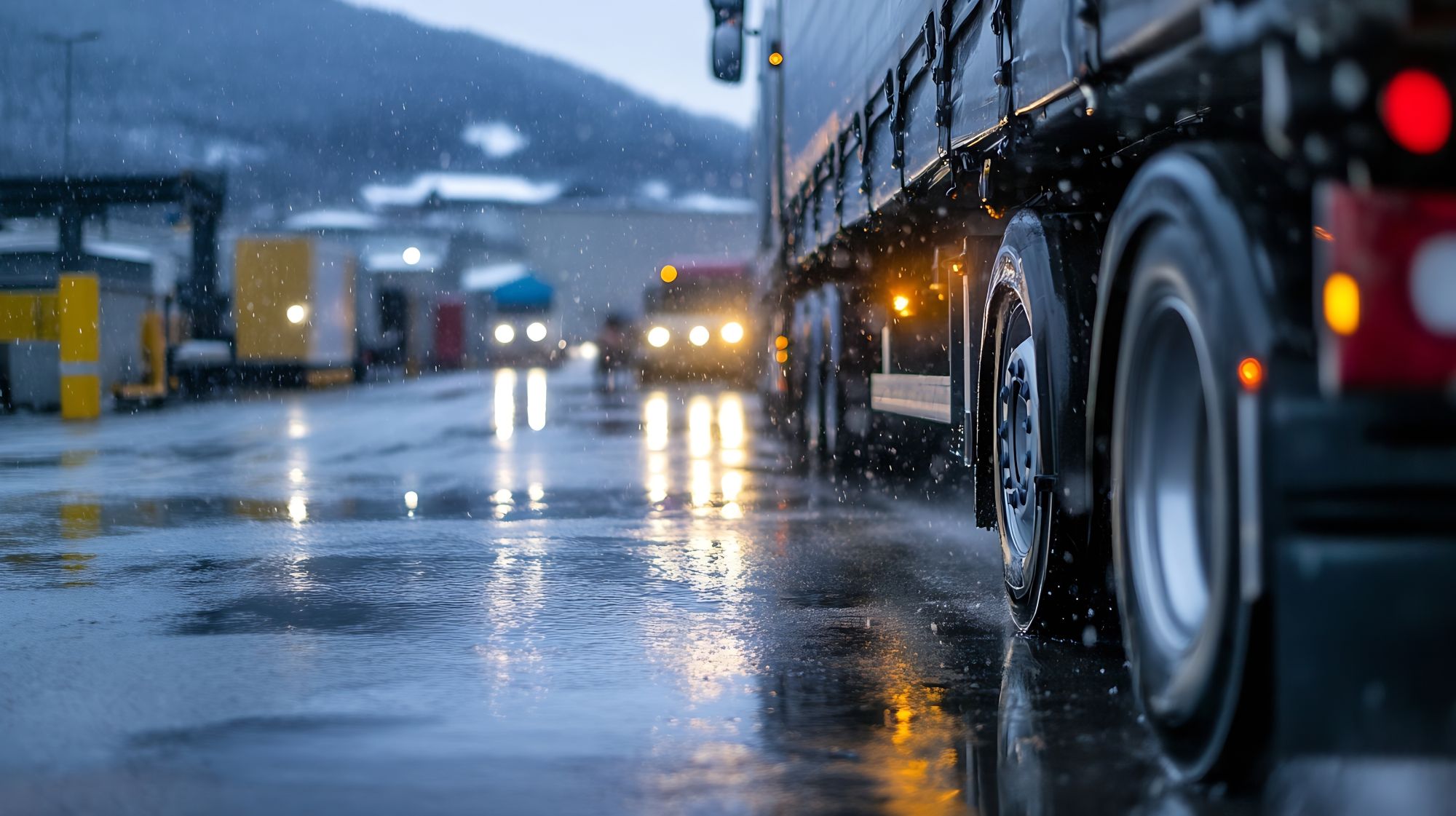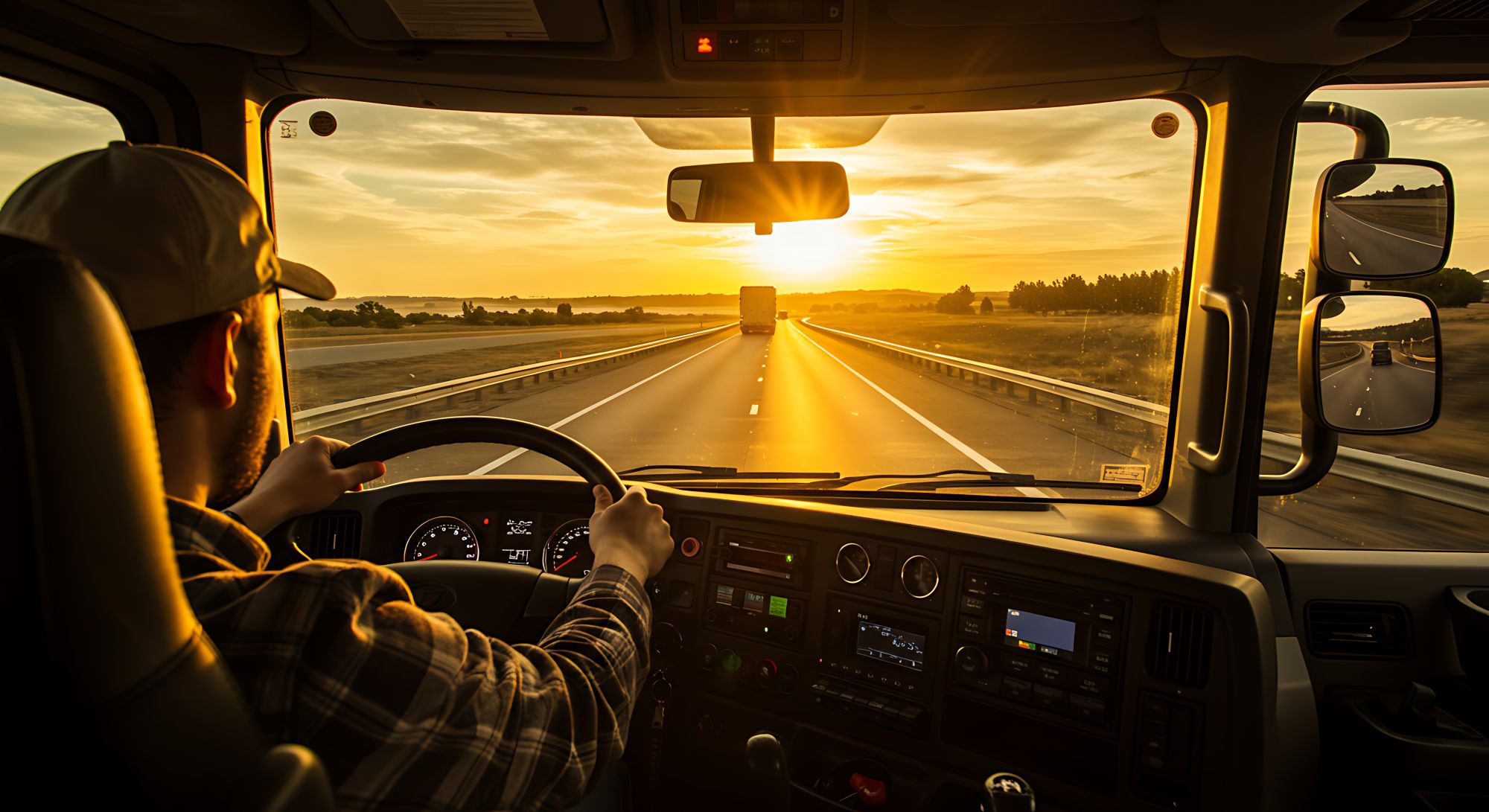
Guest
Hogyan hat az éghajlatváltozás a mobilitási ágazatra
Létrehozva: 21. 07. 2025
•
Frissítve: 21. 07. 2025
Az éghajlatváltozás már nem egy távoli kockázat. A közúti közlekedésben dolgozók számára ez mindennapi működési realitás, amelyet évről évre egyre nehezebb figyelmen kívül hagyni. Az aszfaltot megolvasztó hőhullámoktól kezdve a fő útvonalakat elvágó árvizekig, a változó éghajlat hatása beépül az áruszállítás üzletmenetébe.
A flottakezelők számára ez azt jelenti, hogy el kell igazodniuk a változó szabályozásokban, frissíteniük kell az infrastruktúrát, és újra kell gondolniuk a folyamatossági tervezést. A járművezetők számára ez azt jelenti, hogy alkalmazkodniuk kell az új kockázatokhoz az utakon - a gumiabroncsok kidurranásától a megszakadt szállítási határidőkig. Az egész ágazat számára pedig azt jelzi, hogy a mobilitás rugalmasabb, klímatudatosabb megközelítésére van szükség.
Az időjárási zavarok operatív fenyegetést jelentenek
2022 júliusában az Egyesült Királyságban a [rekordmeleg nap] (https://www.theguardian.com/uk-news/2022/jul/19/uk-weather-record-hottest-day-ever-heatwave) volt. Ahogy a hőmérséklet 40 ℃-ra emelkedett, az utak elkezdtek felpuhulni, és az A14-es út szakaszait lezárták a felület leromlása miatt. A flottaüzemeltetők kénytelenek voltak átirányítani a szállításokat, néha rövid időn belül, miközben a motorok hőmérséklete megugrott, és a járművek nehezen tudták fenntartani a teljesítményüket.
Ugyanebben az évben az [Eunice vihar] (https://www.theguardian.com/world/2022/feb/18/flights-and-trains-cancelled-as-storm-eunice-hits-europe) erős szelei széles körű károkat okoztak a nyugat-európai árufuvarozási folyosókon, felborítva a magas oldalfalú járműveket és megrongálva a hőmérsékletre érzékeny rakományt. Eközben 2024 januárjában a Henk vihar Közép-Anglia hatalmas területeit árasztotta el. Középföld kulcsfontosságú útvonalai járhatatlanok voltak, és egyes járművezetők órákra rekedtek.
Ezek nem elszigetelt események. Ezek a közlekedési rendszer jeleit mutatják, amely egyre érzékenyebbé válik az éghajlati veszélyekkel szemben. Az útburkolat, a járműalkatrészek és a logisztikai hálózatok mind próbára vannak téve a változó körülmények miatt - és a következmények az egész ellátási láncban érezhetők.
Megszakadt ellátási láncok
Az éghajlattal kapcsolatos zavarok nem csak az egyes útvonalakon jelentkeznek. Egész ellátási láncokat érintenek - néha kevés figyelmeztetés nélkül. Hollandiában a tengerszint emelkedése és a hevesebb esőzések arra késztetik a hatóságokat és a vállalkozásokat, hogy újraértékeljék a kritikus logisztikai infrastruktúra ellenálló képességét, különösen az alacsonyan fekvő ipari területeken.
A rotterdami kikötő - Európa legnagyobb tengeri kikötője - aktív lépéseket tett az éghajlati kockázatokhoz való alkalmazkodás érdekében, megerősítette a rakpartfalakat, megemelte a bekötőutakat és korszerűsítette a csapadékvíz-rendszereket az árvíz elleni védelem érdekében. A belvízi logisztikai központokat is vizsgálják, mivel a szélsőséges időjárás a megközelítési útvonalak és a vízelvezetés sebezhetőségére mutatott rá.
Közlekedési innováció
A flottatechnológia gyorsan fejlődik, különösen a villamosítás és az intelligens diagnosztika terén. Az éghajlatváltozás azonban még a legfejlettebb járművek számára is új terhelést jelent. Az akkumulátorok hatékonysága akár 20%-kal is csökkenhet hideg időben, ami csökkenti az elektromos furgonok tényleges hatótávolságát. Eközben a magas hőmérséklet felgyorsítja a gumiabroncsok romlását és további terhelést jelent a jármű hűtőrendszereinek.
E problémák megoldására egyes üzemeltetők olyan prediktív karbantartási rendszerekbe fektetnek be, amelyek a telematikát használják a kopás előrejelzésére és a javítások ütemezésére, mielőtt a költséges meghibásodások bekövetkeznének. Mások korszerűsítik a vezetőfülke komfortrendszereit, hogy megóvják a járművezetők jólétét a szélsőségesen meleg vagy hideg időszakokban. Bár ezek a változtatások előzetes beruházással járnak, megtérülhetnek az üzemidő, a biztonság és a járművezetők megtartása terén.
A növekvő éghajlati kockázat a biztosításokat is átalakítja. Egyes biztosítók a szélsőséges időjárási jelenségek gyakoribbá válására [díjemeléssel] (https://www.insurtechinsights.com/abi-finds-extreme-weather-driving-record-claims-and-premium-increases/) és a kizárások szigorításával reagálnak. Különösen az üzemszüneti biztosításokat vizsgálják fokozottan, különösen ott, ahol az ellátási láncok érzékenyek az ismételt megszakításokra. És bár a szállítmánybiztosítás továbbra is megfontolandó, nem minden biztosítás fedezi automatikusan az olyan éghajlati események okozta késéseket, mint az árvíz vagy az erős szél.
A flottakezelőknek e felmerülő kockázatok fényében felül kell vizsgálniuk a biztosítási fedezetüket. Ez azt jelenti, hogy ellenőrizni kell a kizárásokat, értékelni kell az éghajlattal kapcsolatos események meghatározását, és biztosítani kell, hogy a kritikus hiányosságok - például az útlezárások miatti leállások - megfelelő fedezetet kapjanak. Bizonyos esetekben a kockázatkezelés, az árvizek enyhítése és a járművezetők képzése terén tanúsított proaktív hozzáállás is segíthet kedvezőbb feltételeket biztosítani.

A szabályozási környezet
Miközben az éghajlatváltozás fizikai hatásai már most is érzékelhetők, a szabályozási változások a bonyolultság egy újabb rétegét jelentik az üzemeltetők számára. Az alacsony kibocsátású zónák gyorsan terjednek az Egyesült Királyságban és Európában, ami új követelményeket támaszt a flotta összetételével és a megfelelőséggel szemben. Londonban az ultraalacsony kibocsátású zóna (ULEZ) folyamatosan növekszik, míg olyan városok, mint Birmingham és Oxford saját változatait vezették be.
Európai szinten a [Green Deal] (https://transport.ec.europa.eu/news-events/news/green-deal-greening-freight-more-economic-gain-less-environmental-impact-2023-07-11en#:~:text=The%20uptake%20of%20more%20aerodynamic,cube%20containers%20by%20standard%20vehicles.) és a [Fit for 55] (https://commission.europa.eu/strategy-and-policy/priorities-2019-2024/european-green-deal/delivering-european-green-deal/fit-55-delivering-proposalsen#:~:text=Under%20the%20European%20Climate%20Law,cost%2Deffective%20and%20competitive%20way.) csomag ambiciózus célokat tűzött ki a szén-dioxid-mentesítésre. A flottaüzemeltetőket arra ösztönzik - és egyre inkább kötelezik -, hogy térjenek át a tisztább üzemanyagokra és technológiákra. A villamosítási megbízásoktól kezdve az ellátási lánc átláthatóságára vonatkozó szabályokig az üzemeltetők új alapvonalakkal szembesülnek az elfogadható üzleti gyakorlat tekintetében.
A flottákat irányítók számára ezek a változások egyszerre jelentenek logisztikai kihívást és stratégiai lehetőséget. A fenntarthatóság elfogadása nem csupán a büntetések elkerülését jelenti - hanem a jövőbe mutató működések biztosítását és a változó vevői elvárásoknak való megfelelést is.
Rugalmas műveletek kiépítése
Az alkalmazkodás nem megy egyik napról a másikra, de a fokozatos változtatásoknak jelentős hatása lehet. Néhány üzemeltető már most elvégzi az éghajlati kockázatok felmérését a flottaüzemeltetésében, azonosítva a zavaroknak leginkább kitett eszközöket és útvonalakat. Mások frissített képzést kínálnak a járművezetőknek, hogy javítsák a biztonságot és a döntéshozatalt a szélsőséges időjárási események során.
Az üzemanyag-választék is változik. Az alacsonyabb szén-dioxid-kibocsátású alternatívákat kereső fuvarozók a HVO - hidrogénezett növényi olaj - felé fordulnak, amely a dízel alternatívája, és új infrastruktúra nélkül csökkenti a kibocsátást. Eközben azok, akik a terhelésoptimalizálási szoftverekbe fektetnek be, nem csak az üzemanyag-takarékosságban látják az előnyöket, hanem a kibocsátáscsökkentésben is, amely támogatja a megfelelési célokat.
Már nem kétséges, hogy az éghajlatváltozás alakítja a közúti közlekedés jövőjét, de nem évtizedek múlva, hanem már most. Az üzemeltetők számára az a kihívás, hogy a reaktív gondolkodásmódról a stratégiai, hosszú távú gondolkodásmódra térjenek át. Ez azt jelenti, hogy meg kell érteni a kockázatokat, időben kell cselekedni, és fel kell ismerni, hogy a rugalmasság gyorsan a versenyelőnyök forrásává válik.
"Ugyanezt halljuk az Egyesült Királyság és Európa flottaüzemeltetőitől" - mondja Nick Renton, a SNAP európai stratégiai és üzletfejlesztési vezetője. "Az éghajlati zavarok nem a jövő kockázata - már itt vannak, és a raktározástól az útvonaltervezésen át a járművezetők jólétéig mindent befolyásolnak. Azok a flották fognak boldogulni, amelyek az éghajlatváltozással szembeni ellenálló képességet üzleti stratégiaként kezelik, nem csupán vészhelyzeti válaszként.
"Ez azért fontos, mert a tétlenség költségei egyre nőnek - nemcsak pénzügyileg, hanem az elmaradt szállítások, a működési leállások és az úton lévő járművezetők jóléte szempontjából is. Ha azt akarjuk, hogy az áruk továbbra is mozogjanak és a vállalkozások növekedjenek, akkor már most el kell kezdenünk a rugalmasság kiépítését."
A SNAP-nál szorosan együttműködünk az Egyesült Királyság és Európa flottáival, hogy segítsünk nekik eligazodni ebben az új valóságban. Legyen szó meglátásokról, partnerségekről vagy az útközbeni műveletekhez szükséges intelligensebb eszközökről, mi itt vagyunk, hogy támogassuk azokat, akik a kerekeket mozgásban tartják - bármilyen időjárás esetén. Regisztráljon még ma, hogy kihasználhassa flottakezelési megoldásaink előnyeit.



